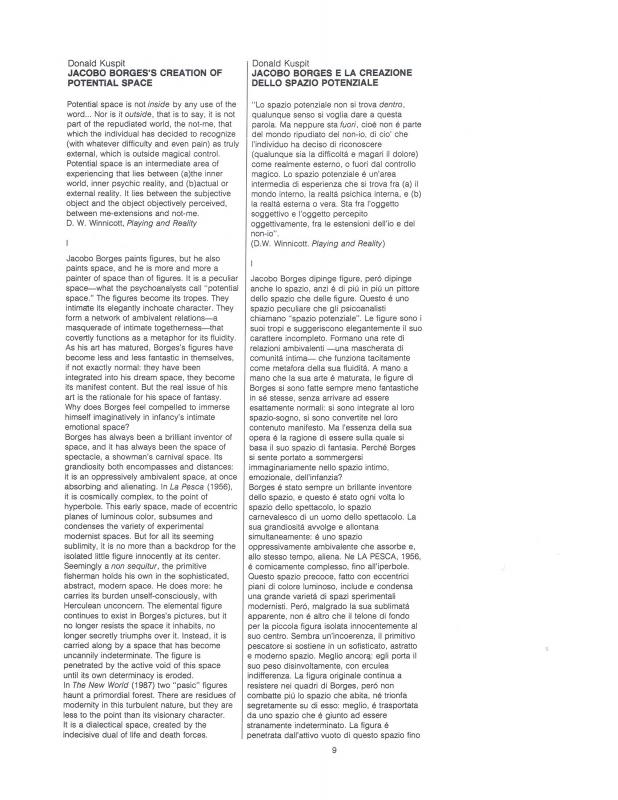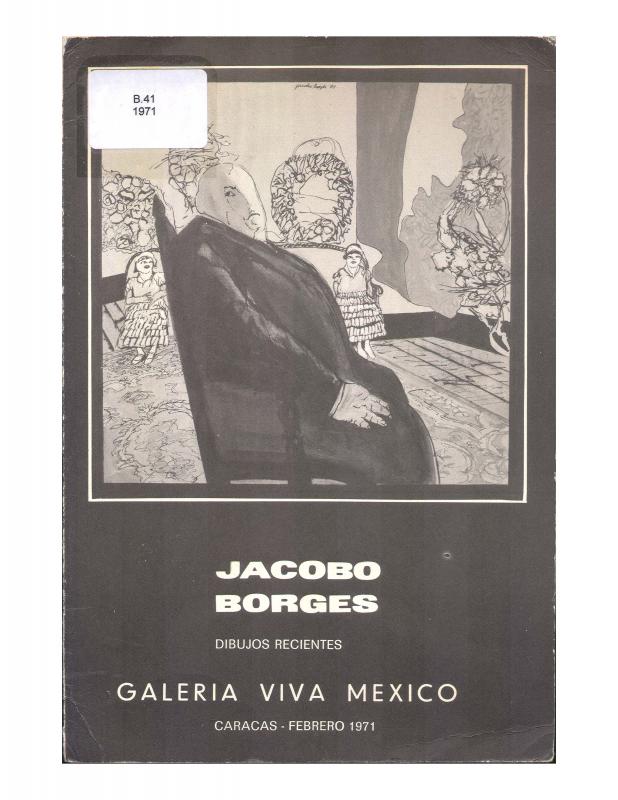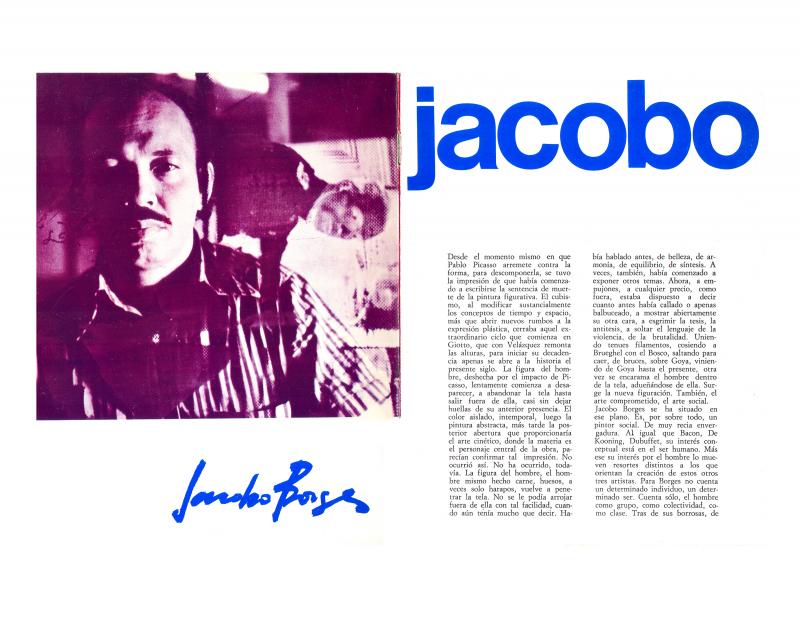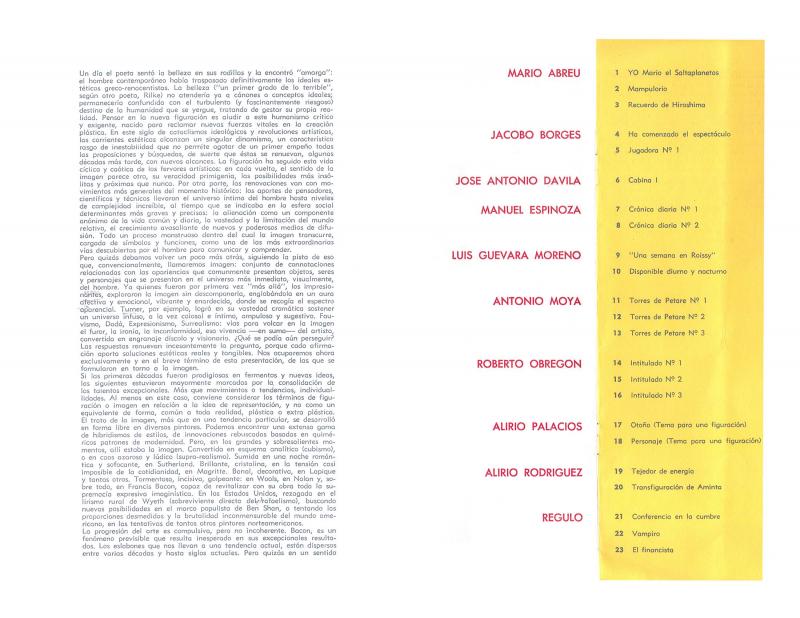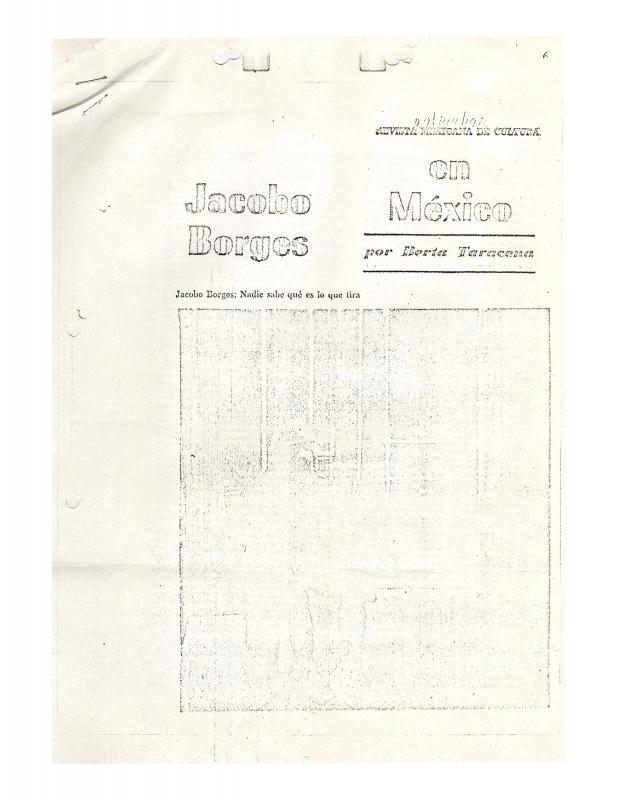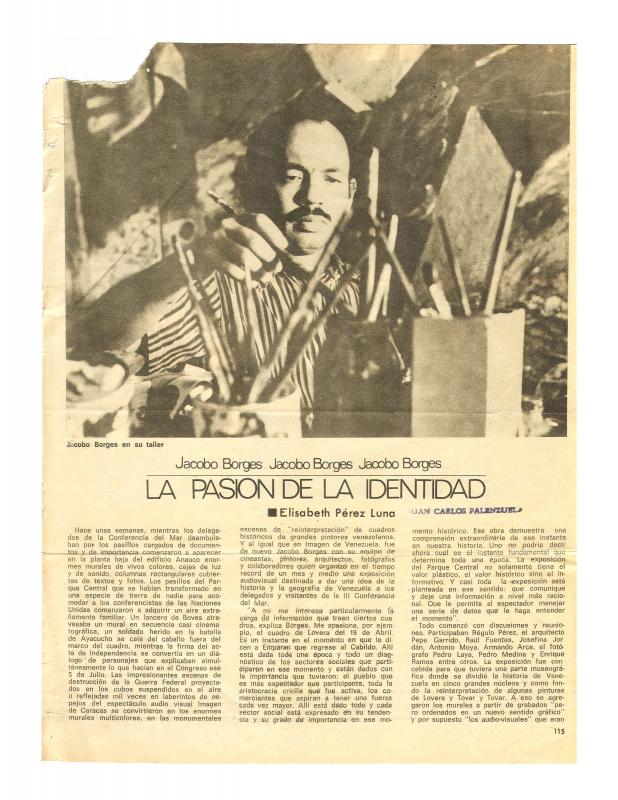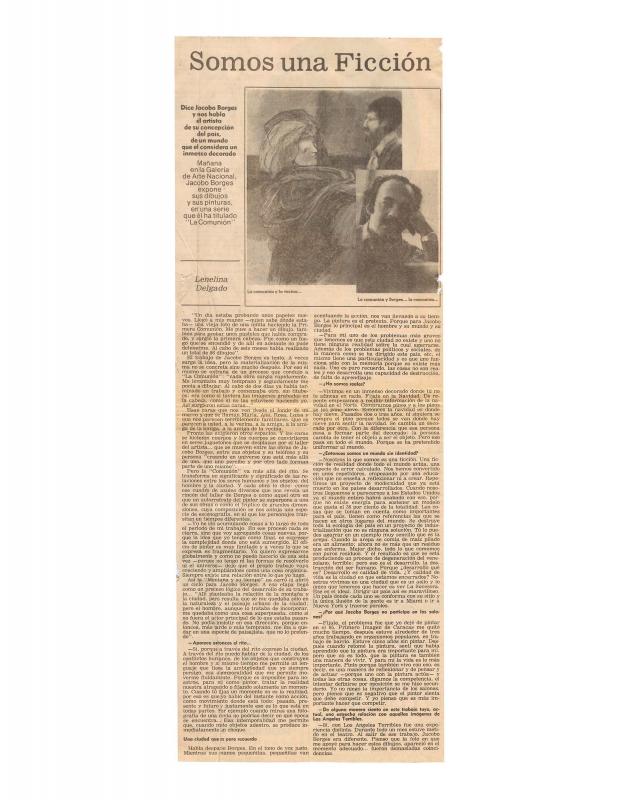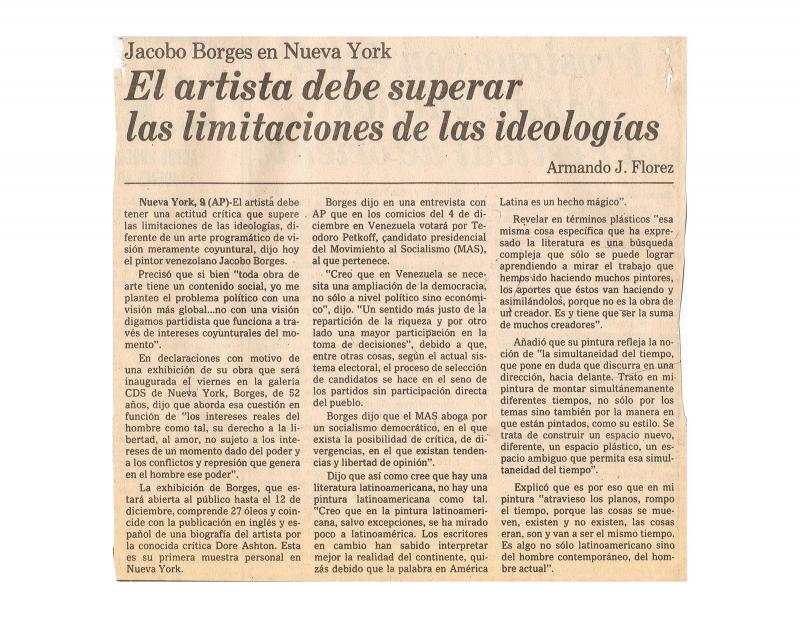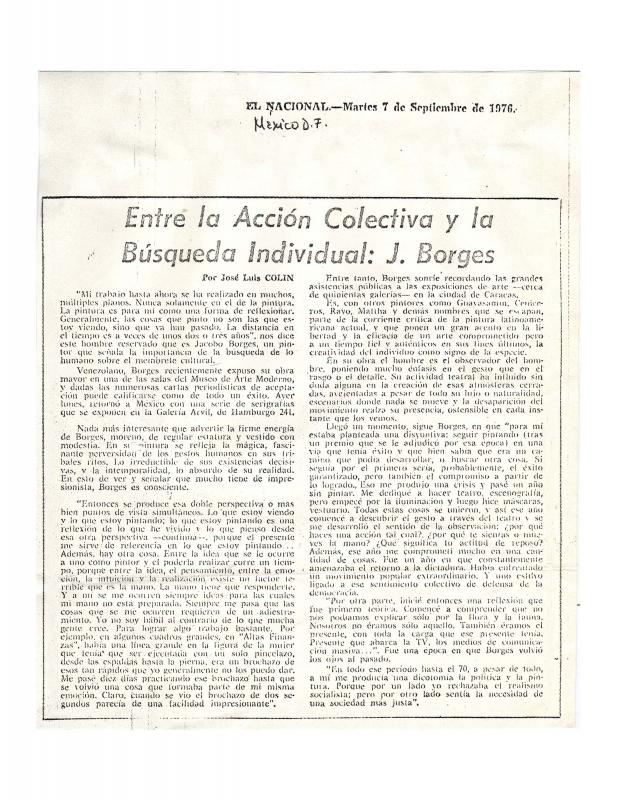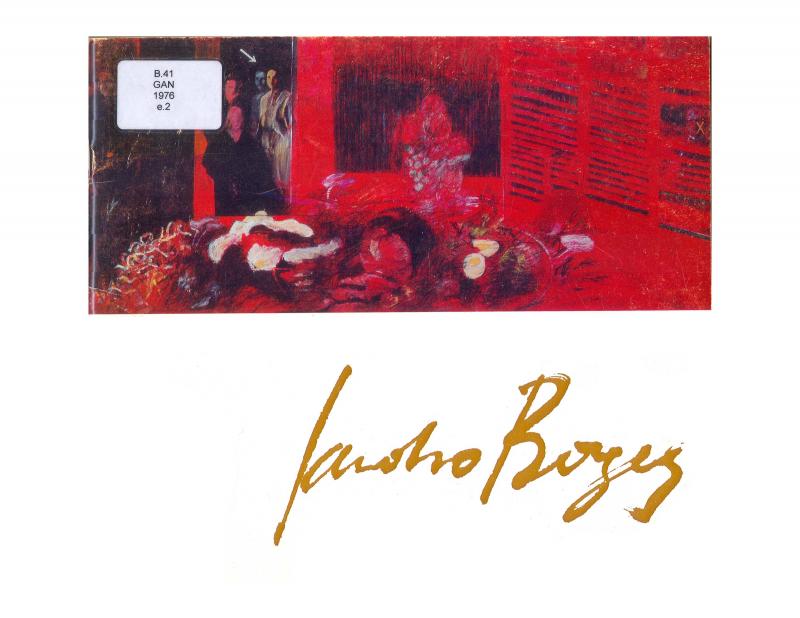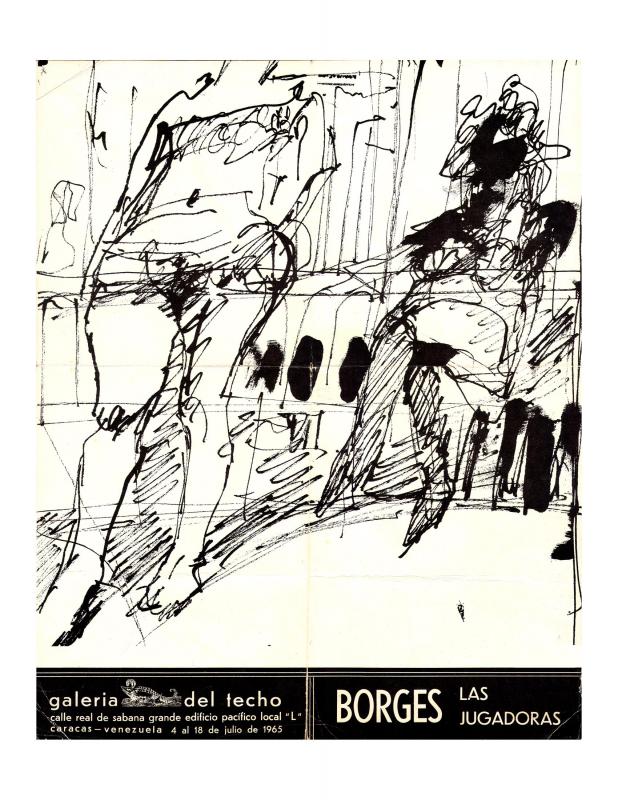In this review, the critic and curator Adolfo Wilson discusses certain fundamental aspects of the work produced by Jacobo Borges over the course of his lengthy artistic career and across the range of media in which the Venezuelan painter worked. The critic also mentions, describes, and analyzes Borges’s most emblematic work, providing a complete overview of the artist’s main interests, particularly with regard to the conceptual and ideological work he produced during more than twenty years.
According to Wilson, Borges’s work evolved according to what he learned about humanity. The critic describes the artist’s painting as the space where he addresses certain questions and responds to the problems of human existence. It is a place where he can express the most concrete and visible dilemmas of anything from social, political, and moral issues to the (spiritual, metaphorical, unconscious, and symbolic) dimensions of reality. Although Wilson does not provide an explanation for the title of his essay, the text suggests that he regards the exhibition of clues that Borges offers in his (purely humanistic) work as being “hermeneutic expressions of reality,” which are part of his constant attempts to plumb the unknown depths of human existence.
[With regard to this artist’s work, see the following texts in the ICAA digital archive: “Reunión con un círculo rojo,” by the writer Julio Cortázar (doc. no. 1060457); “On the paintings of Jacobo Borges,” by the critic Carter Ratcliff (doc no. 1060564); by Donald Kuspit, “Jacobo Borges’s creation of potential space” (doc. no. 1060608); by Perán Erminy, “Una exposición de obras de Jacobo Borges” (doc. no. 1060424); by Inocente Palacios, “Jacobo Borges” (doc. no. 1060361); and by Roberto Guevara, (untitled) [“Un día el poeta sentó la belleza en sus rodillas…”] (doc. no. 1060477). See also the essay by historian Berta Taracena, “Jacobo Borges en México” (doc. no. 1063795); the newspaper review by Elizabeth Pérez Luna, “Jacobo Borges: La pasión de la identidad” (doc. no. 1063714); as well as the following interviews conducted by Lenelina Delgado, “Somos una ficción” (doc. no. 1063831); Armando J. Florez and Aliana González, “El artista debe superar las limitaciones de las ideologías: Jacobo Borges en Nueva York” (doc. no. 1065435); and José Colin, “Entre la acción colectiva y la búsqueda individual: Jacobo Borges” (doc. no. 1063769). The critic Juan Calzadilla wrote two essays about the artist: “Presentación” (doc. no. 1060392), and (untitled) [“Hasta ahora lo que entre nosotros se había llamado…”] (doc. no. 1060684)].


